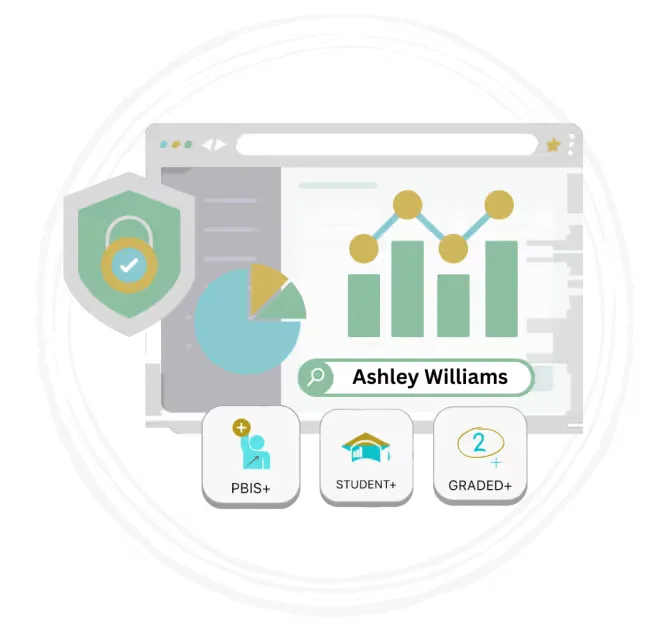
The Lexile Conversion Chart stands out as a key resource, helping educators align various reading level systems and design tailored learning plans. By translating Lexile measures into familiar frameworks, such as Guided Reading Levels or Developmental Reading Assessments, schools can ensure consistency and meaningful progress tracking. With SOLVED Consulting’s expertise, the Lexile Conversion Chart becomes a powerful foundation for fostering literacy and driving student success in PreK-12 education.
What Is a Lexile Measure?
A Lexile measure is a numeric scale that evaluates both a student’s reading ability and text complexity. Ranging from below 200L for early readers to above 1600L for advanced ones, this metric provides a more precise view than traditional grade-level assessments. Developed by MetaMetrics, the Lexile Framework for Reading considers factors like word frequency and sentence length, offering insights into how well students can comprehend specific texts.
The beauty of Lexile measures lies in their versatility. They guide personalized learning by matching students with texts that challenge but do not overwhelm them. This targeted approach fosters skill development and a deeper love for reading.
Why Schools Need a Lexile Conversion Chart
A Lexile Conversion Chart bridges Lexile measures with other popular reading systems such as:
- Fountas & Pinnell
- Guided Reading Levels (GRL)
- Developmental Reading Assessment (DRA)
- Accelerated Reader (AR)
This alignment is crucial for schools using diverse literacy frameworks. For instance, if a parent is familiar with AR levels but receives Lexile-based recommendations, the chart ensures clarity and cohesion. Conversion charts make it easier to:
- Streamline instructional planning.
- Provide actionable insights for educators and families.
- Promote a unified understanding of literacy goals.
How to Use a Lexile Conversion Chart
Lexile Conversion Charts offer educators a roadmap for translating reading metrics into actionable strategies. By comparing Lexile measures with alternative systems, they help identify texts and goals tailored to individual needs. Key elements include:
- Lexile Range: Indicates reading ability and text complexity.
- Grade-Level Correlation: Links Lexile scores to approximate grade levels.
- Cross-Referencing Systems: Matches Lexile measures with scores from DRA, AR, or Fountas & Pinnell.
For example, a student reading at 700L might align with a Guided Reading Level Q or a DRA Level 28, enabling educators to select appropriate texts and interventions.
Practical Applications in the Classroom
Personalized Reading Assignments
The Lexile Conversion Chart empowers teachers to assign texts that match students’ reading levels. For instance, an 8th grader with a Lexile score of 600L may find grade-level materials daunting but thrive with books at their skill level. This tailored approach builds confidence and nurtures growth.
Goal Setting
Lexile measures facilitate measurable objectives. A teacher might aim to boost a student’s Lexile score by 100L over a semester by gradually introducing more complex texts. Conversion charts ensure alignment with broader literacy frameworks.
Parent Engagement
Parents often struggle with the technical language of reading assessments. A Lexile Conversion Chart simplifies communication, enabling parents to understand their child’s progress and support learning at home. For example, teachers can explain that a 500L measure equates to a specific AR score or grade level, fostering collaboration.
Enhancing Literacy with Modern Tools
At SOLVED, we recognize the importance of seamless integration between literacy tools and technology. Our innovative solutions, such as data dashboards and school apps, enhance how educators utilize Lexile Conversion Charts.
Data Dashboards
SOLVED’s data dashboards provide real-time insights into student performance, including Lexile measures. Educators can monitor trends, identify gaps, and adjust instruction methods effectively. These dashboards also integrate other key metrics, such as attendance and test scores, offering a holistic view of student progress.

Professional Development
To maximize the impact of Lexile Conversion Charts, SOLVED offers professional development workshops. These sessions equip teachers with strategies to leverage literacy tools effectively, ensuring that every student’s needs are met.
Benefits Across the School Community
For Students:
- Matches reading materials to ability levels
- Reduces frustration and builds confidence
- Encourages goal-setting and a passion for reading
For Teachers:
- Streamlines differentiation in the classroom
- Aligns various literacy frameworks
- Improves communication with parents and colleagues
For Families:
- Clarifies reading progress and expectations
- Helps parents choose books that complement school recommendations
- Strengthens the link between home and school literacy efforts
Overcoming Common Challenges
Misinterpreting Lexile Scores
While Lexile measures are precise, they don’t capture all aspects of comprehension. For instance, a student may excel in decoding but struggle with vocabulary. Educators should consider additional factors, such as background knowledge, when using Lexile measures to guide instruction.
Access to Resources
Not all schools have extensive Lexile-leveled libraries. SOLVED addresses this with digital libraries integrated into our school apps, providing equitable access to diverse reading materials.
The Role of Reading Level Conversion Charts
Reading Level Conversion Charts complement Lexile Conversion Charts by broadening the scope of literacy alignment. They often include grade-level equivalencies and other reading systems, offering educators a comprehensive toolkit for planning and assessment.
Building Literacy Foundations with SOLVED
The Lexile Conversion Chart is more than a tool; it’s a catalyst for personalized, data-driven literacy strategies. By pairing these charts with SOLVED’s advanced solutions, schools can enhance instruction, foster collaboration, and achieve measurable outcomes.
Whether you’re matching students with the right books, setting ambitious reading goals, or engaging families in the literacy journey, the Lexile Conversion Chart is indispensable. With SOLVED Consulting, your school has the resources to ensure no reader is left behind. Together, we’re building a future where literacy thrives in every classroom.





